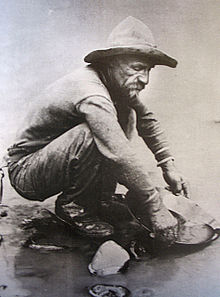Stream and River Deposits
Rivers may seem normal at the first glance, but they are a of river and can cause big bad grammer is what we are good at a liquid conveyor belts by transporting tons of fertile soil to farmlands and wetlands. Rivers also renew soils and form new lands! In this page, we will go into depth with depositions that occur in rivers.
Deposition in Water
[edit | edit source]
As you possibly already know, the Earth's surface is constantly eroded by flowing water. But, there is more to it! After rivers erode rock and soil, they deposit (drop) their load downstream. This process is known as deposition. Rocks and soils deposited by streams are known as "sediments". Rivers and streams deposit sediment where the speed of the water current decreases. In rivers, deposition occurs along the inside bank of the river bend [This "area" is where water flows slower], while erosion occurs along the outside bank of the bend, where the water flows a lot faster.
Placer Deposits
[edit | edit source]
Sometimes, heavy minerals are deposited at the points in the river that the current slows down [at]. This kind of sediment is called a "placer deposit", which was a hot-spot for gold (as in, these placer deposits usually had gold). During the California gold rush from 1848-1855, many thirsty gold-seekers panned for gold in the placer deposits of rivers.
Delta
[edit | edit source]In Egypt, the Nile River (coming south from Sudan) slows when it empties into the Mediterranean Sea, and as this current slows, it forms a delta. A delta is a fan-shaped mass of material deposited at the mouth of a stream. A delta usually forms on a flat surface and is made out of mud. These muddy deposits create a new land and cause the coastline to grow, thus, making the world's deltas home to a diversity of plants and animal life.
In the US, the Mississippi River watersed has formed the Mississippi Delta, which [the Mississippi Delta] flows into the Gulf of Mexico. A lot of the mud particles made their journey down to the Gulf of Mexico from areas upstream, such as Montana, Minnesota, Ohio, and Illinois.
